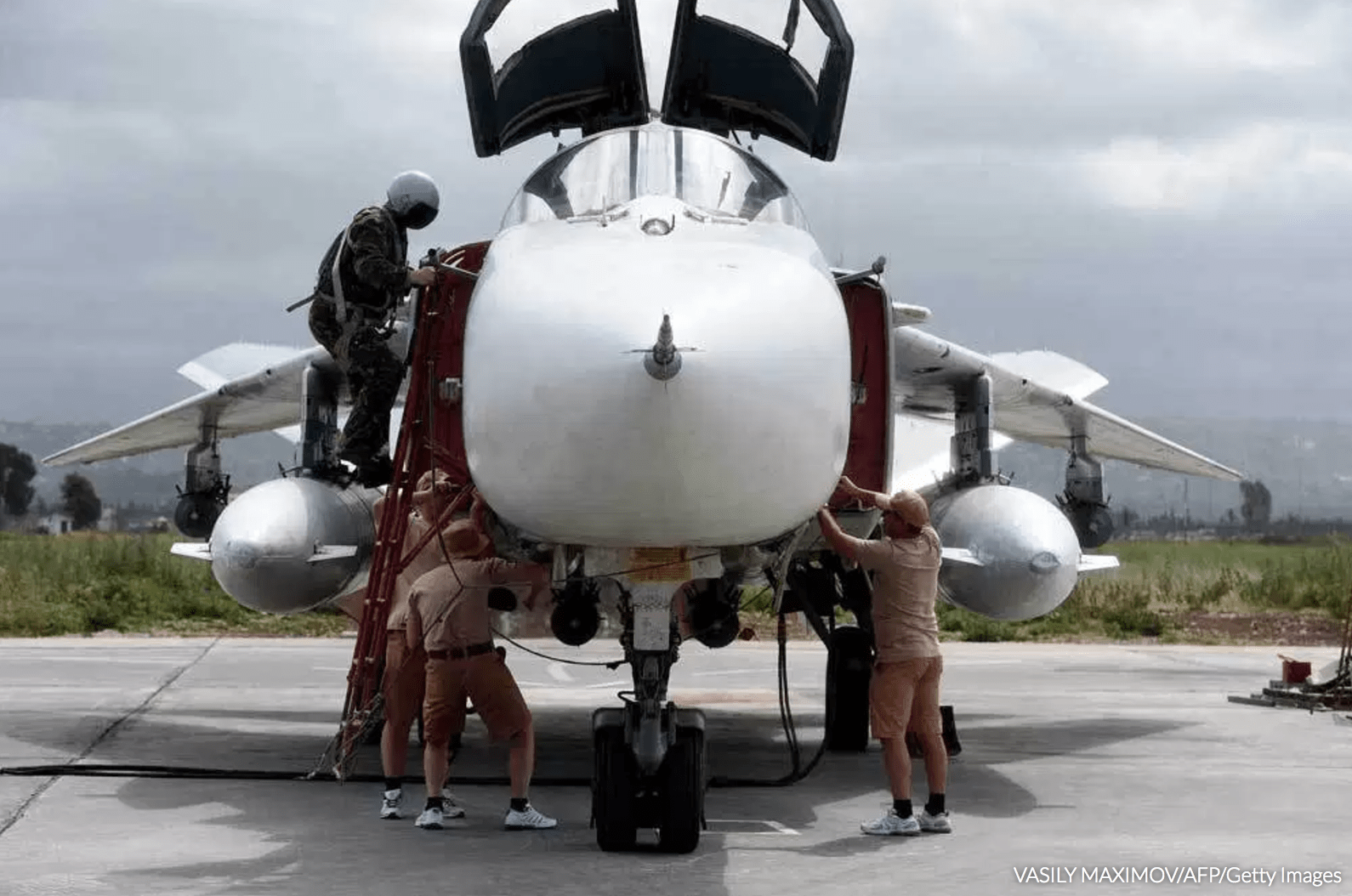In the short-term Putin can shrug off the U.S. strikes, but Russia’s long-term strategy in Syria is coming under strain.
Whether drafted in the comfort of his opulent Tuscan villa or in the corridors of the federal government’s building on Krasnopresnenskaya Naberezhnaya by the Moscow River, Prime Minister Dmitry “Dimon” Medvedev’s Facebook status statement is more or less what one might have expected from Russia after the Trump Administration struck Syria last week: Angry talk, indignation—yes, but hardly a threat. The stillborn honeymoon between Russia and the Trump Administration is over before it even started, but Moscow is not prepared to respond to the U.S. strikes in kind. The “verge of a military clash” is little more than rhetorical flourish.
The Kremlin has correctly read what the United States really achieved. President Trump successfully played to domestic outrage, and “did something” instead of standing idly by in the aftermath of a telegenic massacre of children. His decision to authorize military action was set in stark relief to Obama’s reluctance to enforce his own red line in August 2013. His use of force against Assad’s use of chemical weapons allowed his Administration to more credibly threaten North Korea’s own norm-breaking behavior half way around the world. And his infuriating the Kremlin complicated the narrative in Washington that he was somehow in the thrall of Putin.
However, the strike’s larger impact on the ground in Syria is much narrower. The Kremlin understands that attacks against airfields near Homs and Damascus do not amount to a vital threat to Russian interests in Syria. Short of a massive push involving ground forces, the U.S. cannot easily topple Assad. True, Assad may think twice next time he considers using chemical weapons. But he can probably rest easy that the U.S. will not act with the same resolve next time his forces use barrel bombs against civilians in rebel-held areas, as they have done for years.
The overarching priority for the U.S. government remains the destruction of self-styled Islamic State (IS). That is the common thread that links the Obama and the Trump Administrations. Having dealt a blow to Bashar, America will no doubt shift attention back to eastern Syria and the imminent operation against the IS capital of Raqqa. Washington’s battle-tested ally, the Kurdish YPG, which forms the bulk of the so-called Syrian Democratic Forces, is also supported by Russia and profits from a symbiotic relationship with the Assad regime. Even though Moscow has suspended the airspace deconfliction agreement signed in 2015, the U.S. government and its proxies in the Euphrates valley will have to work out an ad hoc arrangement with the Russians. There is also the burning question of who will take over Raqqa from the jihadis. The Kurds may wish to take possession, but controlling a mainly Sunni Arab city and its surroundings will be a tall order. Turkey, which sees the YPG as an extension of the outlawed PKK, and even Saudi Arabia are sure to push back too. This leaves two options: either the United States moves in, ramping up its presence on the ground after IS is gone, or the regime takes over. One way or another, Russia will be part of the picture yet again.
Finally, as noted by scores of observers, Assad embarrassed Russia with his reckless attack on Khan Sheikhoun. From the outside it might look as if he is in Putin’s pocket. In reality, the tail often wags the dog. The half-hearted attempt to whitewash Assad’s use of chemical weapons, blaming the poisoning of civilians on leakage from stockpiles belonging to Tahrir al-Sham (Al Nusra’s latest reincarnation), barely papers over the sense of exasperation emanating from the Kremlin. It was Putin who brokered the deal under which Damascus supposedly surrendered its chemical arsenal in 2013. Now it looks as if he is either complicit in a war crime—or, even worse, Assad cheated on him and would have gotten away with it had it not been for Trump.
To be sure, Moscow won’t seize this opportunity to disown Assad—especially not after the United States decided to apply military force. The strikes are already making the Kremlin hug the regime ever more closely, even if it’s only for domestic purposes. But in the long term, Russia’s success hinges on keeping its options open. A viable exit strategy through a negotiated power-sharing deal and, possibly, a transition won’t work unless Assad is forced to compromise. The prospect of a separate deal between Russia and the United States, presenting Damascus and the Iranians with a fait accompli, is an option Putin would love to preserve. Expect the Kremlin to probe the likelihood of that kind of arrangement when Secretary of State Rex Tillerson lands in Moscow later this week.
Up until now, the stars have been in alignment for Russia in Syria. Its limited military intervention had achieved all of its immediate goals and was paying dividends in regional credibility. Moscow secured the Assad regime at the very moment it was nearest collapse, after the fall of Idlib in 2015; Putin emerged as the chief powerbroker in the conflict, outfoxing the United States, coopting the Iranians, bullying the Turks, rekindling ties with the Kurds, and even reaching out to parts of the anti-Assad opposition. The fall of East Aleppo to the regime and the two rounds of talks in the Kazakh capital of Astana, co-sponsored with Turkey and Iran, signaled the apex of Russian influence.
But even without U.S. intervention, the endgame in Syria was becoming more and more elusive. Last month, rebels from the Failaq al-Rahman, the Free Syrian Army, and an alliance linked to al-Qaeda mounted an offensive on the outskirts of Damascus. Tahrir al-Sham and Ahrar al-Sham, a powerful Salafi militia supported by the Gulf States and Turkey, has taken dozens of villages in the Hama region, expanding the Idlib enclave. The various factions of the moderate opposition, emboldened by America’s decision to take action against Assad after years of hesitation, now have even less incentive to compromise. Expectations of more assertive U.S. policy are high, both on the ground in Syria and amongst the states backing the insurgents. And Israel has intervened too, repeatedly striking Assad’s ally, Hezbollah. In mid-March, Syrian air defenses sprung to action against Israeli jets, raising the risk of escalation along the southern border. Russia is now engaged in a conflict it cannot control, even under the best of circumstances.
As the dust settles, Putin will have to think harder about Syria. In the short term he can simply shrug off Trump’s gung-ho streak and let the likes of Dimon or the MFA spokeswoman Maria Zakharova blast the Americans. But Russia’s long-term strategy is clearly under strain.
This article was first published by The American Interest


 Dimitar Bechev
Dimitar Bechev